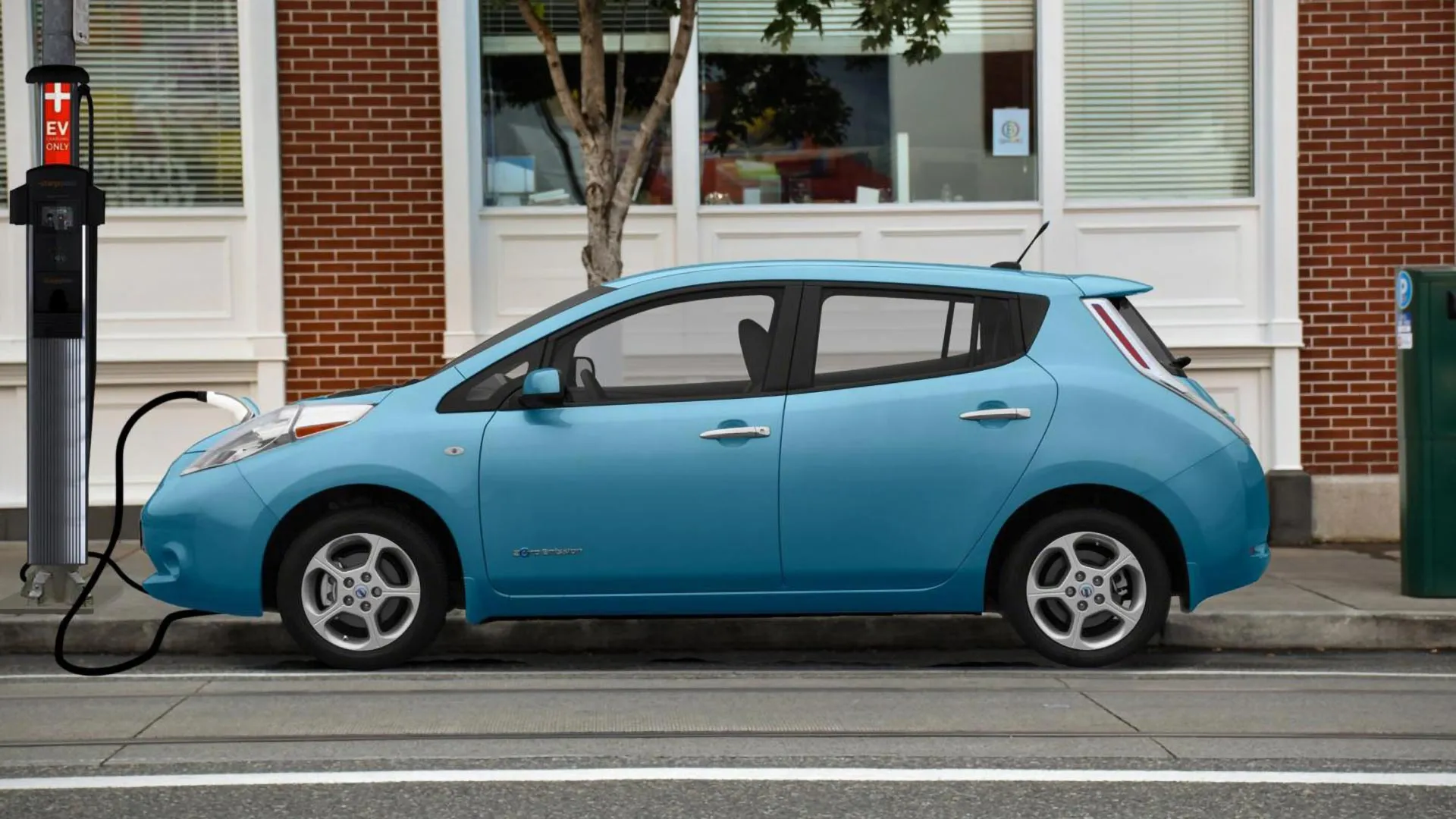Lighting the way for electric vehicles by using streetlamps as chargers
By using existing infrastructure, researchers created a scalable model for cost-effective EV charging.
- Date:
- October 5, 2025
- Source:
- Penn State
- Summary:
- A Penn State research team found that streetlights could double as affordable EV charging stations. After installing 23 units in Kansas City, they discovered these chargers were faster, cheaper, and more eco-friendly than traditional stations. Their AI-based framework also prioritized equity and scalability, making it adaptable for cities across the country.
- Share:

Electric vehicles (EVs) can help cut fuel expenses and lower emissions compared to gasoline-powered cars. However, their success depends heavily on the availability of convenient charging options. For people living in apartment complexes or dense urban neighborhoods, access to charging stations is often limited, which continues to slow wider EV adoption.
Turning Streetlights Into Charging Stations
To help close this gap, researchers at Penn State designed a scalable framework to develop and assess streetlight-based charging systems as an affordable and equitable solution. The team installed 23 of these modified streetlights in Kansas City, Missouri, to test the concept. Their findings showed that streetlight chargers were not only more cost- and time-efficient than traditional charging stations, but they also produced fewer environmental impacts and were easier for drivers to access.
The study was published in the Journal of Urban Planning and Development, a publication of the American Society of Civil Engineers.
A Simple Idea With Big Potential
"The motivation for this work comes from the fact that many apartment and multi-unit dwelling residents, particularly in urban and downtown areas, lack access to dedicated home EV chargers, since they don't have the privilege of owning a garage," said Xianbiao "XB" Hu, associate professor of civil and environmental engineering. "Fortunately, streetlight poles are already powered and typically owned by municipalities, making them relatively easy to work with. Their placement -- often near on-street parking and in high-traffic areas -- makes them well-positioned to serve both local residents and visitors."
Funded by the U.S. Department of Energy, the researchers partnered with the Kansas City, the non-profit organization Metro Energy Center, local utilities companies and the National Renewable Energy Lab to retrofit existing streetlights to function as EV chargers. They then established a three-pronged framework -- focused on demand, feasibility and benefits -- for other communities to use to develop streetlight EV chargers.
"The scalability was a huge part of what makes this framework important," said corresponding author Yang "Chris" Song, who was a doctoral student at Penn State at the time of the research and is now a data scientist at ElectroTempo. "Creating something that works not just in one specific city but that can be adopted by many communities easily is critical for increasing EV use across the country."
To determine demand, the researchers looked at factors including land use, station density, points of interest nearby, and traffic volume and then used the data to train artificial intelligence models to make demand predictions based on these factors.
"We also took into account equity, which here means the proactive engagement with the community to ensure fair and inclusive distribution of the streetlight charging benefits across diverse neighborhoods," Song said.
Testing the System in the Real World
The researchers used the demand and equity analyses to select 23 streetlights and installed EV charging stations. They collected data from the stations for one year.
Compared to traditional EV charging ports, they found that these stations were much cheaper to install, since the infrastructure already existed. They also found that the streetlight chargers offered significantly faster charging speeds, likely because they draw power from dedicated municipal electrical lines and face less competition from multiple vehicles charging simultaneously, unlike clustered commercial stations, according to Yuyan "Annie" Pan, a postdoctoral researcher working with Hu. The streetlight charging stations also benefited the environment, since there were gasoline savings and greenhouse gas reductions by using locations where cars were already parking.
"We found that using streetlights for EV charging offers an innovative and equitable approach to expanding charging infrastructure and promoting sustainable electrification," Pan said.
Next Steps: Expanding the Model
For next steps, the researchers said they would like to build on their models to incorporate more detailed socio-economic data and weather information. Incorporating socio-economic factors will help identify communities with limited EV access or adoption potential, ensuring more equitable infrastructure deployment. Weather data is also critical, as extreme temperatures can affect battery performance, travel frequency and overall energy demand.
Tianjia Yang, a postdoctoral researcher, and Yuxin Ding, a doctoral candidate, both of whom are affiliated with the Department of Civil and Environmental Engineering, are co-authors on the paper.
The U.S. Department of Energy supported this work.
Story Source:
Materials provided by Penn State. Note: Content may be edited for style and length.
Journal Reference:
- Yuyan “Annie” Pan, Yang Song, Tianjia Yang, Yuxin Ding, Xianbiao Hu. Equitable Urban Electric Vehicle Charging: Feasibility and Benefits of Streetlight Charging in Kansas City Right-of-Way. Journal of Urban Planning and Development, 2025; 151 (4) DOI: 10.1061/JUPDDM.UPENG-5865
Cite This Page: